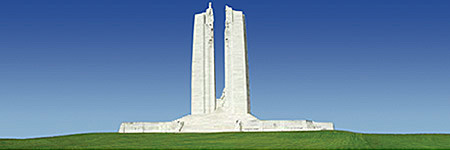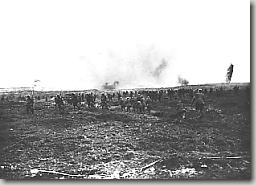Vimy Memorial Being Rededicated In Shadow of Afghanistan Tragedy
By 250 News

It is 5:30 a.m. and at this time, 90 years ago, the Canadian troops launched their assault on Vimy Ridge.
The ceremony today to rededicate the refurbished memorial has been made even more poignant with yesterday’s news that 6 Canadians were killed in a blast near Kandahar Afghanistan on Easter Sunday.
Sgt. Donald Lucas, Cpl. Aaron E. Williams, Pte. Kevin V. Kennedy, Pte. David R. Greenslade, Cpl. Christopher P. Stannix and Cpl Brent Poland were killed when their vehicle was hit by a roadside bomb.
It was the single largest loss of Canadian life in Afghanistan since 2002.
They are now among the 51 Canadian soldiers and one diplomat killed in Afghanistan since 2002.
Prime Minister Stephen Harper is with his family, preparing to take part in today’s ceremony in France to rededicate the monument to those who died at Vimy and in France, during the First World War. 
The battle to secure Vimy Ridge, would cost 3,598 Canadians their lives, another 6 thousand would be wounded. It would also lead many historians to say it was a point which saw Canada transform from a Colony to a Nation.
In 1936, Brigadier-General Alexander Ross who had commanded the 28th (North-West) Battalion at Vimy said of the battle “"It was Canada from the Atlantic to the Pacific on parade. I thought then . . . that in those few minutes I witnessed the birth of a nation."
The Vimy Memorial was unveiled in 1936 it took 11 years and $1.5 million to build. King Edward VIII was at the unveiling in 1936, and said "It is a memorial to no man, but a memorial for a nation."
The Memorial was designed by Canadian sculptor and architect, Walter Seymour Allward. The restoration project involved restoring the Memorial to its original pristine white. Queen Elizabeth II, Prime Minister Stephen Harper and French Prime Minister Dominique de Villepin will officially rededicate the monument today.
Previous Story - Next Story
Return to Home










That said, I disagree that it was simply a battle that changed Canada from a colony to a country. I would say it was more than that when one looks at the big picture. It was a battle who’s courage changed the world as it was known to what it is today. More than just building a nation it freed the so-called lesser nations of the world from Imperial governance.
Stephen Leacock at the defeat of Sir Wilfrid Laurier in the election of 1911:
“We are…groping for something which we desire but still seek in vain. The great problem of our common future is to find an organic basis of lasting union.”
The Great War, as it was called at the time, was a great divider of the Canadian people between the pacifists, the French, the farmers, and the supporters of imperial glory. The imperialists won the day going into the war and were the great losers coming out of the war after the huge sacrifices Canadians were asked to make for a war that at its outset Canada had no policy making powers to influence. After the horrors of war in Ypres where Canadians were on the receiving end of a mustard gas attack by the Germans and as a result of the conscription debate, it became clear to Canadians that a Canadian voice was required at the imperial war cabinet. This led to Canada taking a leading role in the idea of an Imperial Commonwealth that recognized the rights of the dominions to equality and sovereignty in the issue of war and the command structure of the imperial war efforts.
In the darkest days of the Great War, a year after the Papineau and Bourassa debate, Canada called for the Imperial War Conference with dominion representation as a result of Britain’s vulnerable position in the war at March 1917, the month before Vimy Ridge. This Imperial War Conference led to the British acceptance of the dominion resolution that articulated a new constitutional status,
“ should be based upon a full recognition of the dominions as autonomous nations of an Imperial Commonwealth”
A right Canada helped secure for all dominions and not just Canada. This led directly to the strong position Canada had at the Paris Peace Conference in 1919 to have Canada’s full involvement in any settlement that was agreed too ending the Great War. A right that was questioned by the United States under the consideration of Canada as a “lesser state”, but was backed by France and Britain and later the Americans after it was pointed out the great sacrifices Canada made to win the war. This led to Canadian recognition as a power in its own right as well as having its collective representation as part of the British Empire delegation; thereby undermining the notion of imperialism, continentalism, and nationalism as the Canadian identity.
The Canadian identity was further defined with the Belfour declaration at the Imperial Conference of 1926 in which recognition of the dominions was summarized as,
“autonomous communities within the British Empire, equal in status, in no way subordinate to one another in any respect of their domestic or external affairs, though united by a common allegiance to the Crown, and freely associated as members of the British Commonwealth of Nations”
So there you have it. Canada did not just win a ridge in the battle for Vimy Ridge it foraged a country based on its common values that through its respect and honour given for its sacrifices was able to extend those values across the globe to all other colonies of the Empire that would make up a future Commonwealth of Independent states.